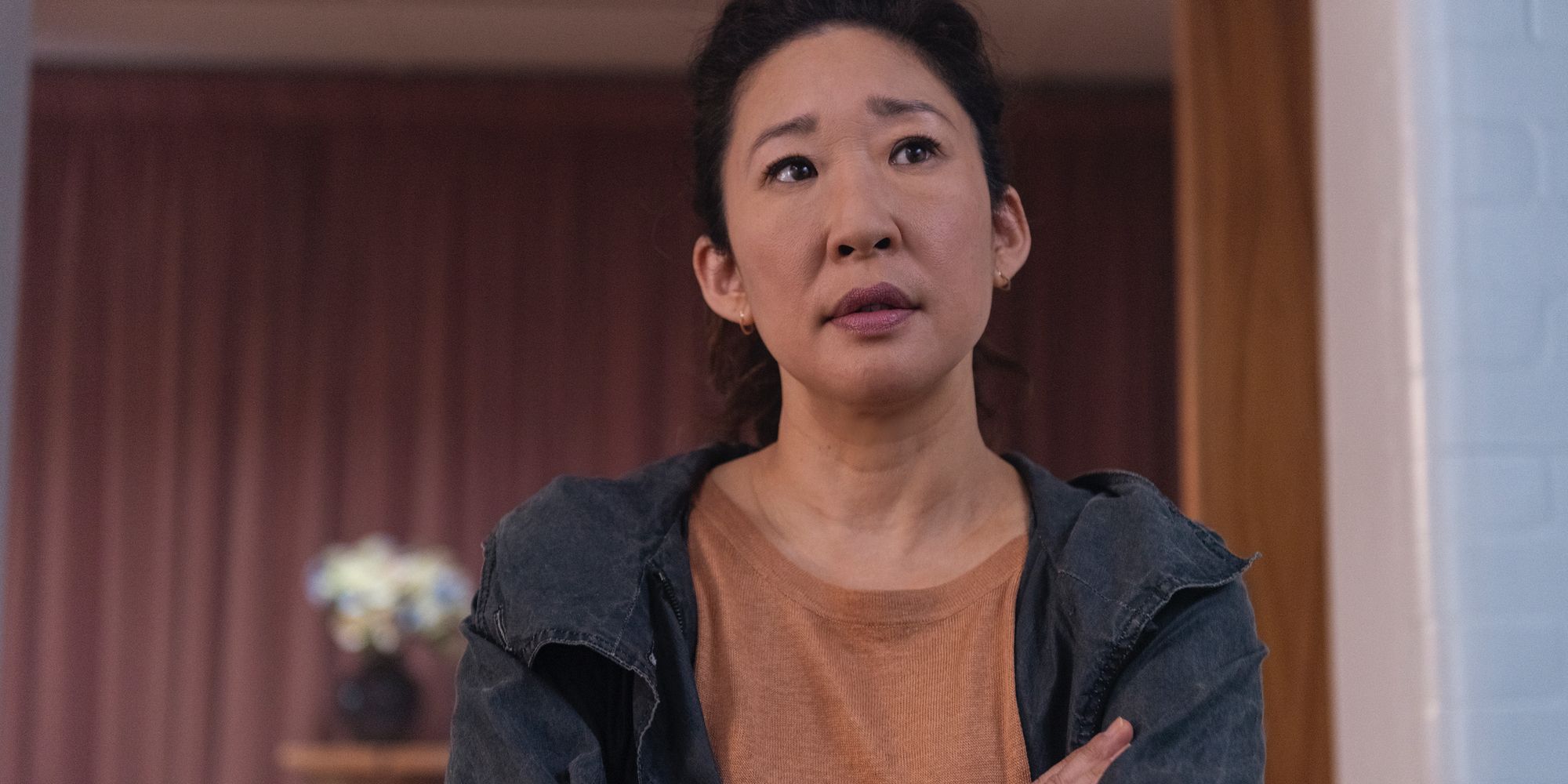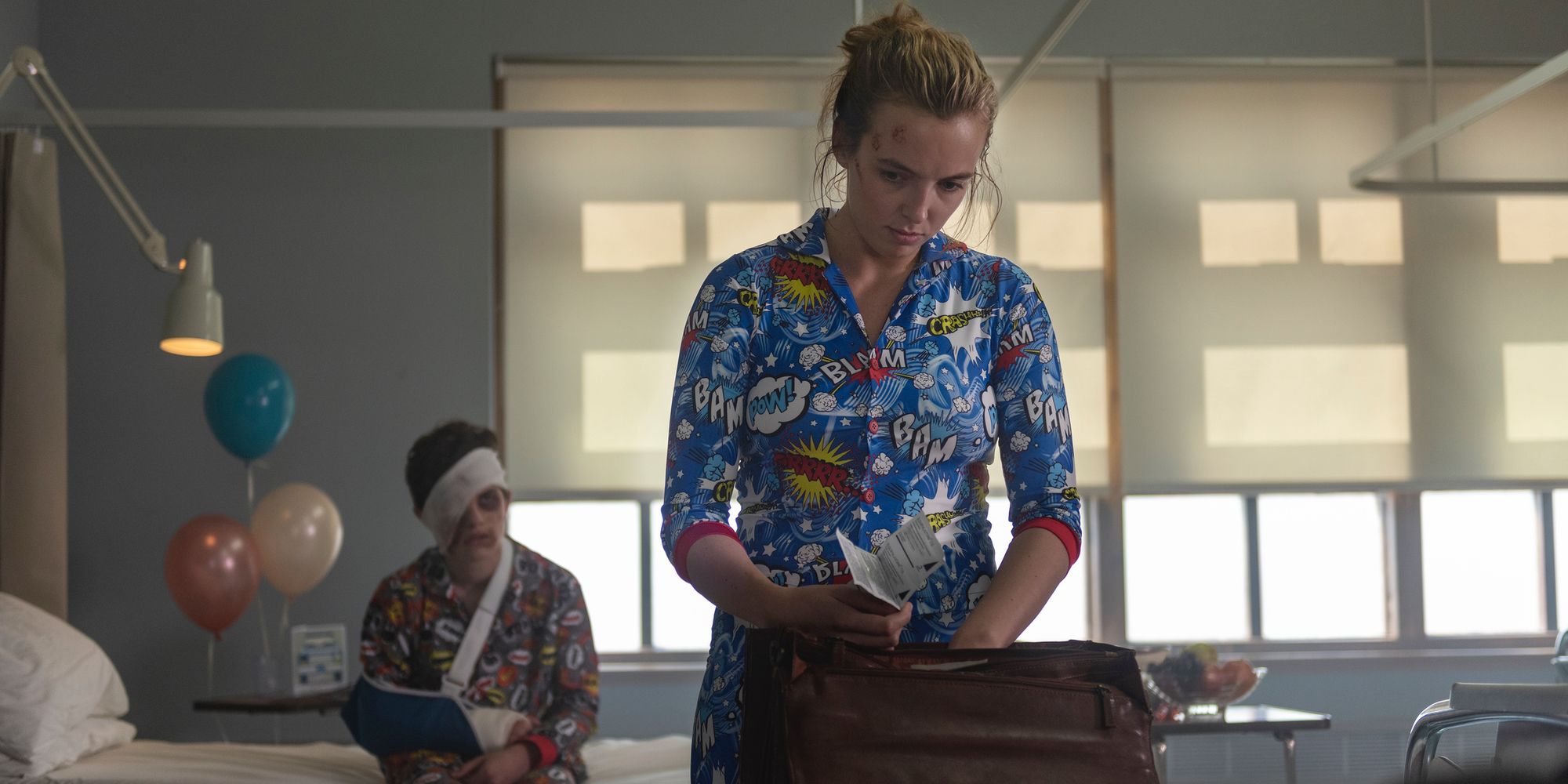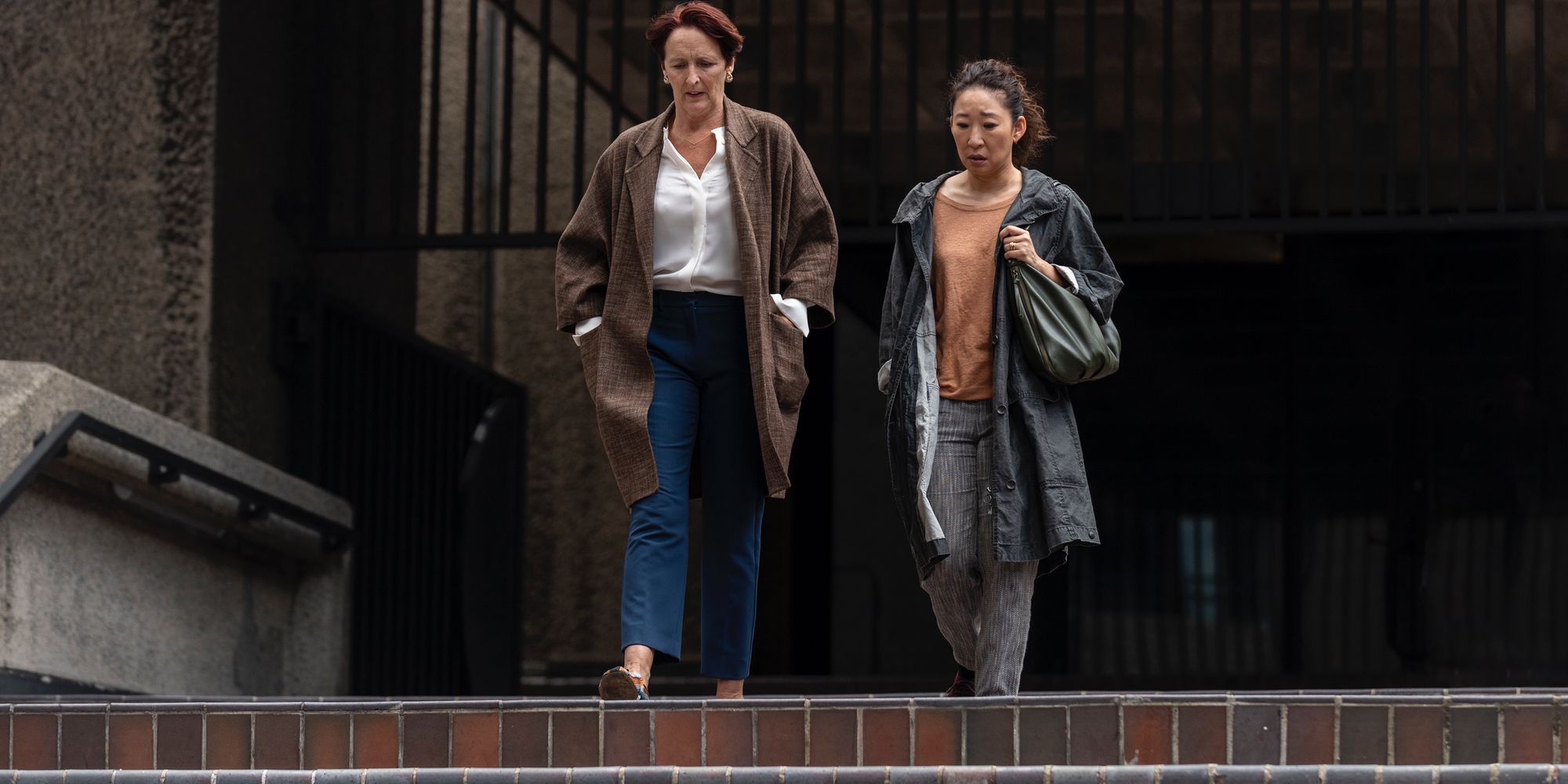Though its story of a spy and a psychopath sharing a mutual obsession with one another deservedly became the central selling point of BBC America’s Killing Eve in season 1, the wicked will they or won’t they between Sandra Oh’s intelligence agent Eve Polatstri and Jodie Comer’s fashionable assassin Villanelle wasn’t the show’s only selling point. The series’ early character- and world-building moments were marked with memorable instants of casual weirdness, like Fiona Shaw’s Carolyn Martens's off-hand remark of watching a rat drink a can of soda. That was due in large part to the writing of creator and executive producer Phoebe Waller-Bridge, a singular talent who, among other things, specializes in turning seemingly innocuous, off-hand digressions into a detour worth obsessing over. It’s the sort of thing that made her a perfect fit for this tense but often very funny adaptation of Luke Jennings’s Villanelle novellas.
The series has made some changes behind the scenes for season 2, with Waller-Bridge handing the writing reins over to Emerald Fennell. Though it’s clear that Fennell and the show’s writers’ room still have a firm grasp on what makes Killing Eve tick, in terms of generating tension between its two main characters, it’s also reassuring to find out that, early in the season 2 premiere, the series still has impeccable timing when it comes to the little idiosyncratic deviations that keep it light and weird. That moment comes midway through the first hour when Eve and Carolyn are snacking on burgers in a morgue, as the medical examiner explains — with no small amount of pleasure — that the smell of formaldehyde and cadavers causes cravings for meat. Whether that’s true or not is almost beside the point; it’s like the soda-drinking rat: a welcome reprieve from the intense cat-and-mouse game at the center of the show.
More: The Tick Season 2 Review: The Superhero Comedy The World Needs Right Now
‘Do You Know How to Dispose of a Body?’ is, oddly, like a collection of those moments, complied into a single hour of television. For the most part it works because of how much effort the show has put into building Eve and Villanelle’s strange obsession with one another and how much fun it is to watch Oh and Comer do their thing. But because the first season ran at such a frantic pace through its first half, building to that inevitable and bloody climax in Villanelle’s Paris apartment, Killing Eve is forced to take a step back, put some distance between its would-be lovers, and reassess the situation. Most of this is for the presumed longevity of the show, and it’s also a fundamental concern with a serialized television series like this one. How can a show built on the tension of a psychopathic infatuation between its two leads maintain narrative rigidity while still turning out eight episodes a season for what the powers that be at AMC would almost certainly love to be several more years?
The seeds of that answer — for the time being, anyway — were sown in season 1, with the discovery of the clandestine group known as The Twelve. The mystery surrounding the group is part of its appeal, but its most enticing element is in how it creates a mutual adversary for both Eve and Villanelle. The only problem is, it’s not nearly as enticing as watching Oh and Comer’s characters contend with their undeniable magnetism.
Early on in season 2 it’s clear that Killing Eve is working its way back as close to square one as possible, using The Twelve as a de facto new end point. That makes the premiere a mix of table setting and careful extrication from some of the narrative corners the first season painted itself into. Much of that has to do with Eve and everything she’s learned about herself, her job with MI5, and her relationship with her husband Niko (Owen McDonnell), who disappeared last season after it became clear he was getting in the way of all the fun Eve and Villanelle could have together. The season premiere employs an impressive level of hand-waiving in order to re-align its various players. What makes those moments work, though, is the willingness to let the seams show, as when Carolyn reinstates Eve to MI5 with all the ceremony of placing a drive-thru order, or when Niko attempts to reconnect with his wife in the midst of a vegetable-chopping nervous breakdown.
While Eve’s situation requires the series to perform a narrative u-turn of sorts, Killing Eve is free to plow straight ahead with regard to Villanelle, who is recovering from the near-fatal stab wound delivered by her would-be paramour. It was no secret that Villanelle would survive her injury, and that her obsession with Eve would not only continue in spite of the stabbing but apparently thrive (“love makes you do crazy things,” after all). As such, Villanelle’s portion of the premiere is what helps give Killing Eve season 2 its legs early on. And, much like the cadaver-induced burger cravings, the show takes its time to inject some levity into the proceedings. The only difference is how wildly it can swing from the relatively light humor of a fashion fetishist cringing while slipping into a pair of abandoned Crocs, to something far, far darker and, consequently, lethal.
The return of one of television’s most highly anticipated series isn’t entirely a return to form, instead its offers a chance for the show to move backwards and forwards at the same time. It’s a delicate balancing act that will become more precarious as the series moves along, as it can’t keep Eve and Villanelle apart for very long without the central tension going slack, but it also can’t go too far in the other direction without the same thing happening. If nothing else, then, watching as the series manages and teases out this anticipation and uncertainty is reason enough to get obsessed with Killing Eve all over again.
Next: Warrior Review: Cinemax Unleashes A Pulpy Martial Arts Period Drama
Killing Eve continues next Sunday with ‘Nice and Neat’ @8pm on BBC America and AMC.



